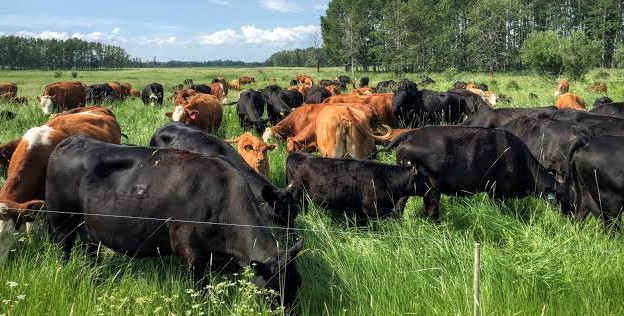

Grazing Management
A group to explore & discuss a range of approaches to grazing management and the impact of the... View more
How to Avoid Overgrazing
-
How to Avoid Overgrazing
One of the most important things we can do for soil and pasture health, which translates to livestock health and productivity, is to avoid overgrazing.


So, what exactly is overgrazing?
Well, it has more to do with how soon we graze a plant than how much of it is grazed.
Plants all need to put on good vegetative growth in order to harvest energy from the sun; and develop decent root systems to acquire nutrients and water from the soil. Through these processes, they build up the reserves needed to survive the various circumstances encountered in their growing environment. This is most important at the beginning of a growth cycle, when reserves are low, and as much as possible, plants should be allowed adequate time for establishment.
Pasture plants are somewhat designed to handle grazing and usually have low and/or numerous growing points from which they can regrow. However, when a significant portion of their foliage has been removed, they have to draw on reserves to support themselves through a phase of initial regrowth. This regrowth usually starts around three days after a graze and the time taken for complete recovery can be anywhere from a few weeks to months. Re-grazing a plant too early exhausts reserves, stunts root development and diminishes its capacity for regrowth. When this occurs, plant vigour is compromised, then a lot more time is required for subsequent recovery and we end up in a negative production spiral.
Often, larger areas are allocated for grazing to avoid having to move livestock as regularly, but unfortunately, this equates to “selective” grazing. Naturally, if our animals have a choice, they will go for the most desirable species first. When left in an area for more than three days, they will most likely choose to re-graze the tender regrowth on the more desirable species before consuming the less palatable species. This leads to the overgrazing of our best species, which puts them at a significant disadvantage and over time, may result in a less favourable pasture plant profile. Ideally, we want to aim for a more even graze and what is more, with the density required to do this in good time, we get better distribution of dung and urine.
In spring, annual cool season species start using reserves to set seed and their feed value markedly drops. We can better utilise these pasture species by grazing them or making hay before they start forming seed, which also initiates some vegetative regrowth; but this is best done on paddocks that have had enough time for recovery. Grazing plants that are going to seed before they have rebuilt reserves, results in very poor regrowth, then early senescence, and we end up with scant cover and small root systems. This leaves the soil exposed and prone to erosion for the duration of the harsh non-growing season.
Further to all of this, herbivores would rather not come back and re-graze the areas they have soiled with dung and urine for quite some time, and the feed value and balance of fibre and sugars and protein is better when plants have properly recovered. The time taken for recovery can vary between species, at different stages of growth and with seasonal conditions. If you’d like to know what recovery looks like for any of the species in your paddocks, let us know and we’ll try to cover it next time.
Log in to reply.

